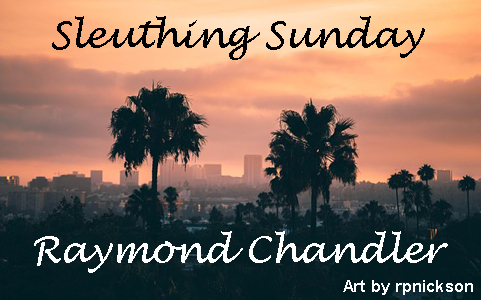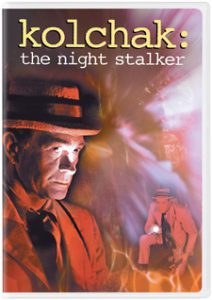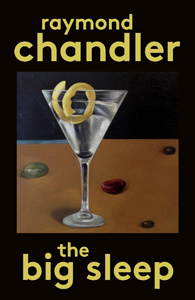I lament that there is only one Sam Spade novel and three short stories. I don’t know if Raymond Chandler lamented that Dashiell Hammett was winding down his writing career around the same time his began, but he certainly takes up the baton.
For a Hammett fan getting into Chandler via his first novel, “The Big Sleep” (1939), the introduction of Philip Marlowe is both a sigh of relief (he could easily be Spade) and a breath of fresh Los Angeles air … not totally in the time before smog, but I imagine it being fresher than today’s.
As Marlowe – who stars in seven novels by Chandler and several additional books authorized by his estate — narrates to begin chapter 21: “… the soot from the oil burners of the hotel next door was down-drafted into the room and rolling across the top of the desk like tumbleweed drifting across a vacant lot.”

“The Big Sleep” (1939)
Author: Raymond Chandler
Series: Philip Marlowe No. 1
Genre: Hardboiled mystery
Setting: 1930s, Los Angeles
Chandler combines Hammett’s bitten-off style with its exact contrast – thorough descriptions – starting with “The Big Sleep’s” first paragraph, describing the mansion of Marlowe’s client. But Chandler’s favored way of describing places, people and things is with smart metaphors that cut to the chase, like “slippery as a watermelon seed.” Marlowe thinks and speaks wittier than is common, although if there’s exaggeration here, the basis remains in reality; like Hammett a decade before him, Chandler got into writing when his job (with an oil company) fizzled.
A hardened man for hard times
As Chandler hardened his exterior to exist in a hard world, Marlowe mirrors him. Many examples in “The Big Sleep” paint him as the only moral person in a given room. The private eye is surrounded by criminals who make much more money than him by moving in the same circles; he fends off attractive women who throw themselves at him; and he keeps his client’s interests at the forefront even when that client isn’t being forthright and when Marlowe might have to protect a murderer.
He’s similar to Spade, but further along in his moral self-actualization. “The Maltese Falcon” ends with Spade explaining to the femme fatale why he must choose himself, his job and his professionalism over her, even if he’s in love with her. Marlowe would not get so worked up; indeed, he nips any potential relationships in the bud.
Granted, in one notable throwback to what we like to call a different time, he asks a femme fatale who is married to another man to kiss him while he’s escaping a dangerous scene; she obliges. I think Chandler writes the moment in part to lay out another descriptive metaphor: “… the rain blew in under the porch, as cold as her lips.”

Every woman in “The Big Sleep” is a femme fatale, save perhaps the horse-faced maid with kind eyes. There’s room for variety within the trope, as certainly the primary one – the client’s wild daughter Carmen – is extreme enough that her psychological issues play into the mystery’s solution. As is the stereotype of hardboiled writers trading in sex along with violence, drinking, cursing and hard-won information gathering, though, Chandler does profess broad notions, as in chapter 24: “It’s so hard for women – even nice women – to realize that their bodies are not irresistible.”
In parodies of the hardboiled style (a.k.a. film noir when it’s transferred to the screen, as “The Big Sleep” has been multiple times, most famously by Humphrey Bogart, who also played Spade), the metaphors are clever word nuggets. But when employed by the best writers, the metaphors also efficiently describe something and advance the action, as with the above example where Marlowe is done with this femme fatale and moves on to the next stage of his adventure.
To live and die in L.A.
The descriptions of buildings, neighborhoods and streets – thus giving me a picture of 1930s L.A. as crisp as what we’d later get in “Chinatown” and setting the city up as one of the central hardboiled/noir cities – are so impressive that I worried for a few pages that that’s all “The Big Sleep” would deliver. The plot comes in quickly, but I feared it would be convoluted.
It kind of is, but an attentive reader shouldn’t have trouble with it, and the prose is so enjoyable that it’s easy to pay close attention. It should be noted that one murder – of the chauffeur – is never explained in the text, and Chandler himself couldn’t even explain it when asked during the movie adaptation process, because he never figured out who killed the chauffeur.
While “The Big Sleep” has to be slightly dinged for this plot hole, Chandler does resolve the overall plot in a tale that – not dissimilar to Hammett’s “The Dain Curse” – ties up some threads long before the end. The story keeps going because one thing leads to another, a mirror of how many real cases go, even though it’s an unusual structure for a novel.
Also similar to “The Dain Curse,” a beautiful but troubled woman is at the story’s core. Marlowe seems slightly less prone to an emotional connection than the Continental Op in that story (or Spade in “Maltese Falcon”), yet his regular citing of his earnings ($25 a day) compared to those of criminals shows he’s equally invulnerable to corruption.
Chandler doesn’t merely ask the reader to accept this, though, as he includes Marlowe’s explanation of why crime doesn’t appeal to him. And indeed Marlowe goes a step further to say he believes victimless crimes are gateways. The initial murder victim, Geiger, is a black-market pornographer, and that leads to other crimes, as well as payoffs to corrupt police that complicate Marlowe’s job further. Reality isn’t always so complex, but Chandler’s L.A. in “The Big Sleep” is, and we wouldn’t have it any other way.
Sleuthing Sunday reviews the works of Agatha Christie, along with other new and old classics of the mystery genre.

